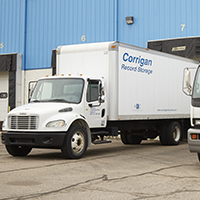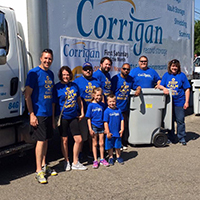From small offices to large corporations, more businesses are trading in filing cabinets for digital records. But going digital isn’t as simple as scanning documents and uploading them to the cloud. It requires planning, security awareness, and reliable partners who know how to manage information responsibly.
Whether you’re making the switch to improve efficiency, protect data, or meet compliance standards, here’s what every business should know before digitizing paper records.
Why Businesses Are Going Digital
The drivers behind the move to digital record management are clear. Companies are looking for smarter, more efficient ways to operate. Shifting from paper to pixels unlocks a new level of productivity and security.
Here are some of the primary benefits:
- Data Accessibility: Find any file you need in seconds with a simple search, from any authorized device.
- Security: Digital files can be encrypted, password-protected, and backed up to prevent loss from theft, fire, or water damage.
- Compliance: Digital recordkeeping makes it easier to meet and document adherence to industry and government regulations.
- Space & Cost Savings: Free up valuable office space previously occupied by file cabinets and reduce ongoing storage costs.
- Sustainability: Going paperless is a great way to reduce your company’s environmental footprint.
Tips for Going Digital
A successful transition requires a thoughtful plan. Follow these steps to ensure your project is organized from start to finish.
Decide on a Digital Filing System Before Scanning
Before you scan a single page, map out your digital organization. A clear structure with consistent folder hierarchies, file naming conventions, and metadata is essential. This upfront planning prevents the creation of a messy digital archive where files are just as hard to find as they were in paper form. Your new system can be integrated with cloud storage, a dedicated document management platform, or your own internal servers.
Prepare Your Documents Before Scanning
Proper preparation ensures an organized digital archive. This step is vital for creating high-quality, searchable scans.
Use this simple checklist:
- Sort files by department, document type, or date.
- Remove all staples, paper clips, and sticky notes.
- Decide what to scan, shred, or store based on relevance.
- Check your company’s document retention policies to identify what you must keep. Don’t have one? Now is the time to create one.
Work with a Professional Scanning Service
While in-house scanning seems cost-effective, professional document scanning services often provide a better return on investment. Professionals use advanced technology to ensure accuracy and security throughout the process.
These types of companies provide different types of scanning services as well. You can choose from services like converting hard copies to digital, large format scanning for documents over 12 by 18 inches, or redaction scanning to black out sensitive information during the process.
Train Your Team on New Digital Workflows
The best digital system will fail if your team doesn’t know how to use it. Provide training on how to access, store, and retrieve files within the new digital filing system. Cover security best practices and backup protocols to ensure everyone is on the same page.
Shred Unneeded Documents After Scanning
After you have a quality digital copy, it’s time to destroy the physical versions. Secure document shredding is a critical step that reduces the risk of a data breach and protects sensitive information. A professional service can provide a certificate of destruction, which serves as proof of compliance and helps keep your workspace clutter-free.
Use a Record Storage Service for Files You Must Keep
Some original documents must be retained in their physical form for legal or regulatory reasons. For these essential files, professional record storage is the ideal solution. These services offer climate-controlled facilities to prevent degradation, restricted access for security, and professional cataloging for quick retrieval when needed.
Audit and Purge Periodically
Effective record management doesn’t end after the initial scanning project. Regular audits are necessary to keep your digital archive organized. Periodically review your files, purge what’s no longer needed according to your retention schedule, and ensure your system continues to meet compliance standards.
Turn Your Paper Problem into a Strategic Upgrade
Digitizing paper records is a transformative project. By understanding the benefits, preparing your documents, using a professional document scanning service, and properly handling the original papers through document shredding or record storage, you can streamline your operations. A well-planned approach turns a big task into a strategic business upgrade.
Ready to take control of your records? Contact Corrigan Record Storage today to learn how our document scanning, shredding, and storage services can help you make a seamless transition to digital.
Meta Description: Learn how to efficiently approach digitizing paper records. This guide covers preparation, working with scanning services, and secure shredding and storage.




